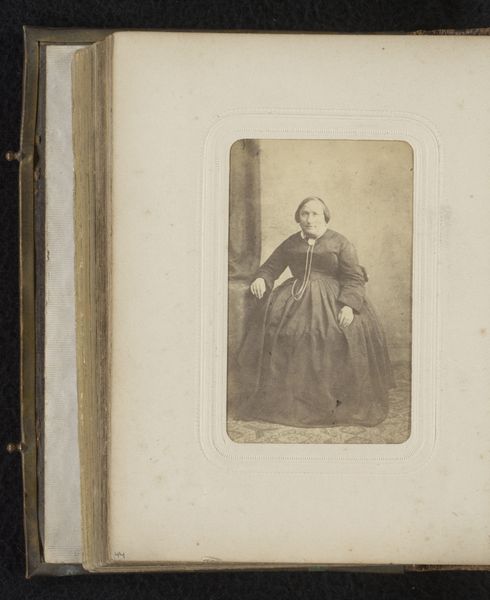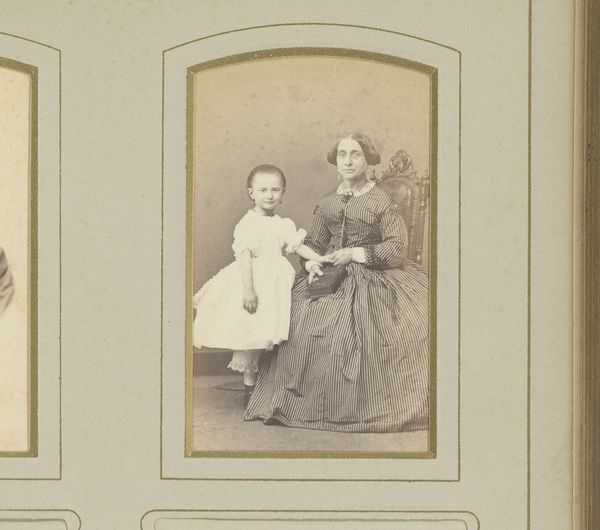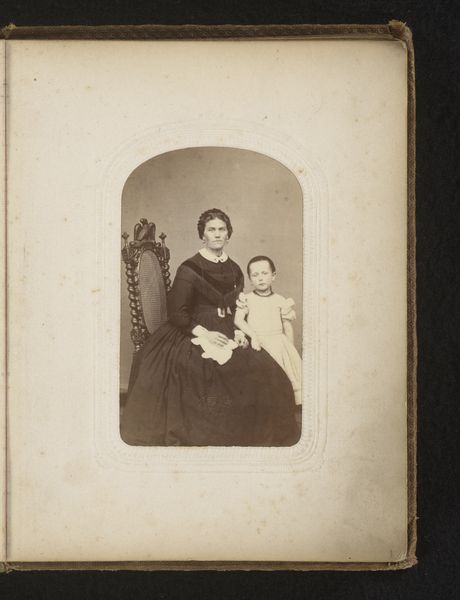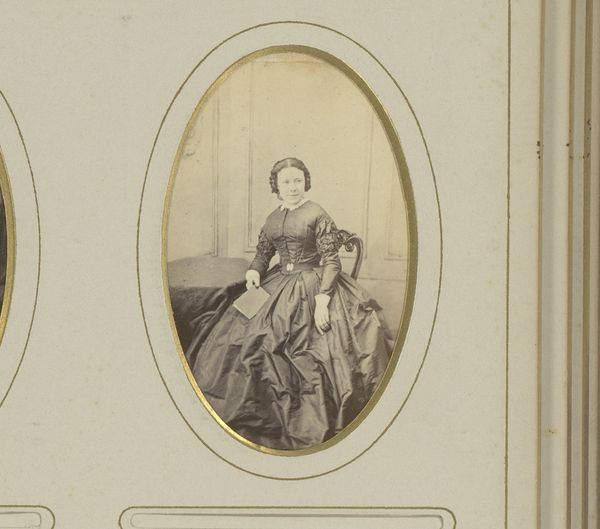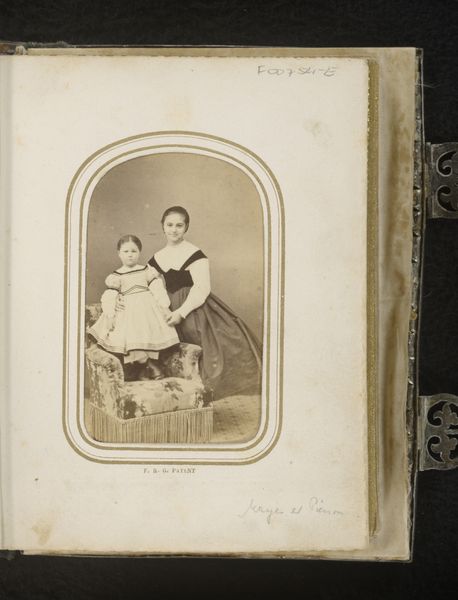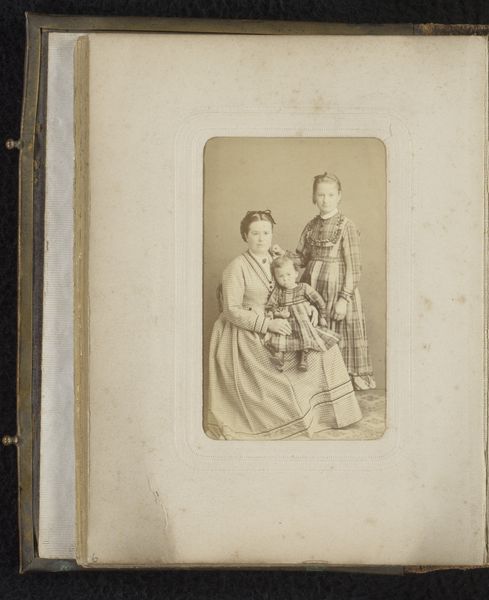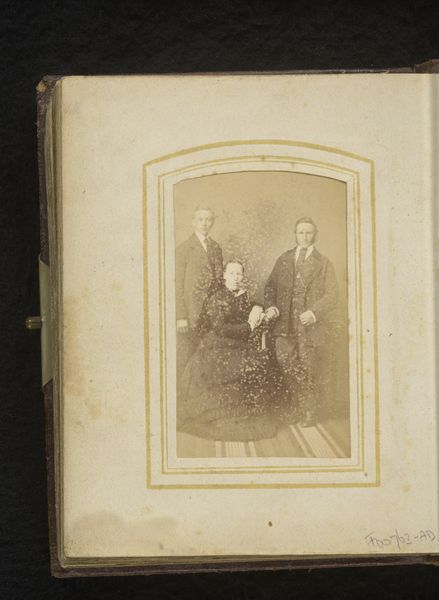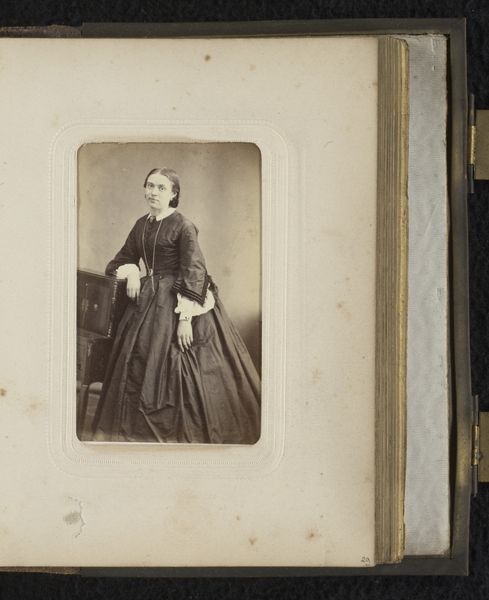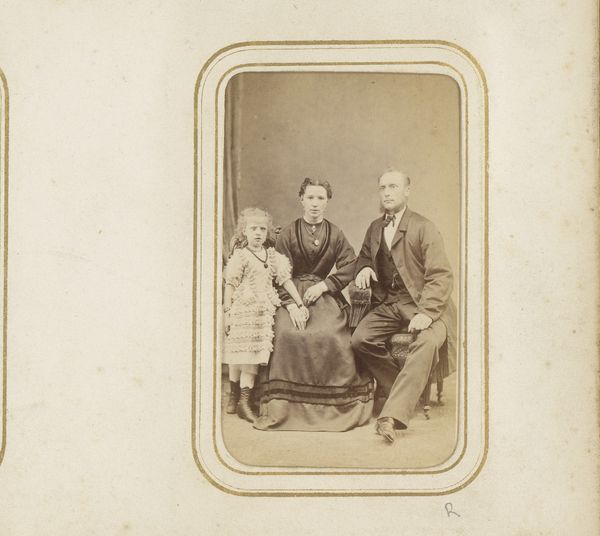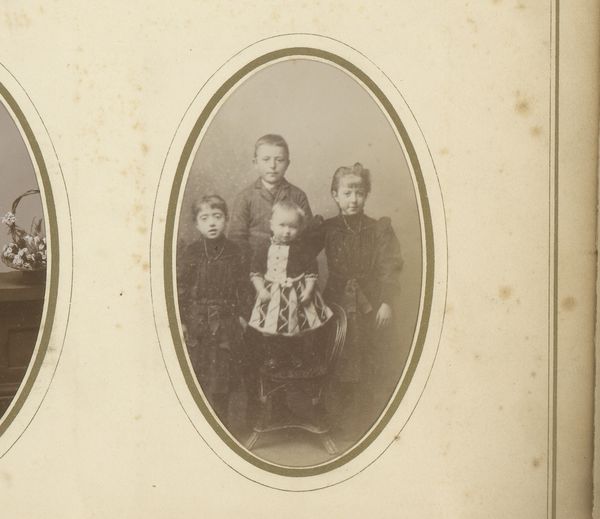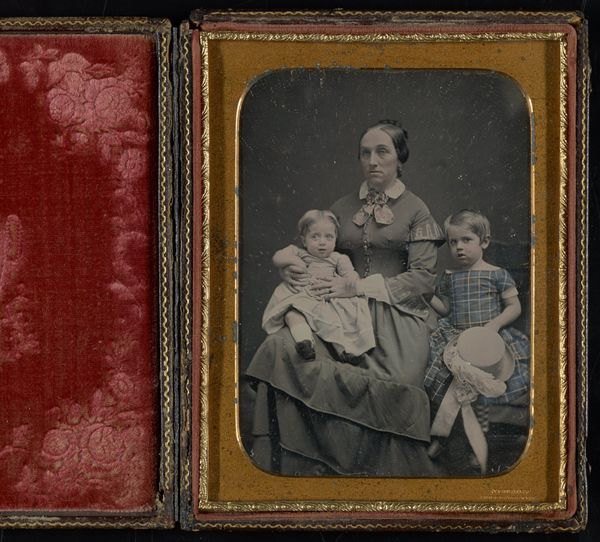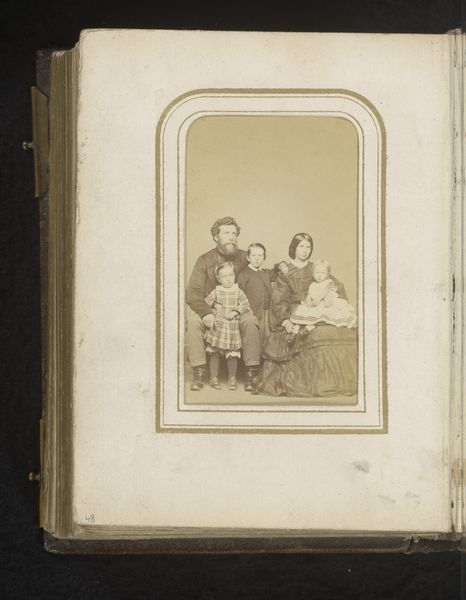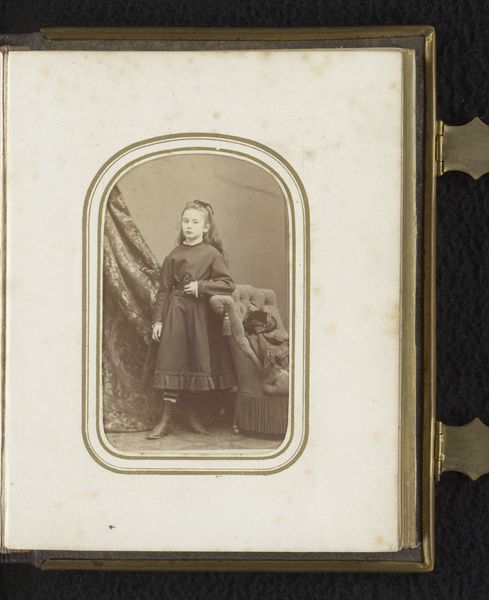
photography, albumen-print
#
portrait
#
still-life-photography
#
muted colour palette
#
photography
#
watercolour illustration
#
genre-painting
#
watercolor
#
albumen-print
#
realism
#
monochrome
Dimensions: height 87 mm, width 53 mm
Copyright: Rijks Museum: Open Domain
Curator: This albumen print, dating roughly between 1860 and 1900, is titled "Portret van een zittende vrouw met een peuter op schoot"—"Portrait of a seated woman with a toddler on her lap." It's attributed to L. Duchatel. Editor: It’s striking how solemn the image is, almost austere. The monochrome adds to that gravity, and the framing within the album page creates this wonderful sense of intimacy, like peeking into a personal history. Curator: These photographs were very much a product of their time. The rise of photography provided a means for the middle classes to emulate aristocratic portraiture, capturing family likeness and presenting a respectable image to posterity. Editor: Yes, and the process of creating albumen prints—coating paper with egg whites and silver nitrate—required skilled labor and careful handling of materials. We’re looking at a tangible object resulting from chemical processes and specific labor practices, unlike today’s digital snapshots. It’s interesting to see photography firmly embraced at this moment. Curator: The woman's clothing and the child’s dress speak volumes about the social expectations of the time. Their garments show an attention to detail, projecting dignity and reinforcing social norms surrounding motherhood. It presents such interesting questions around the sitter’s social class. Editor: Exactly. And the pose! The stillness required for such photographs—imagine the effort needed to keep a toddler so still!—It must have involved techniques of bodily control that would be considered problematic by contemporary perspectives. Think of it as a social act shaped by industrial advances and labor requirements of the trade. Curator: Precisely, such images highlight the democratization of portraiture while also underscoring the performative aspects of presenting oneself according to societal dictates. These seemingly simple studio images had such a significant influence on constructing identities in the Victorian age. Editor: When we consider all the tangible factors—materials, labor, and social contexts—an image such as this speaks much about its epoch. This quiet, intimate album print shows how individuals related not only to family but also to progress and consumption in an evolving industrialized culture. Curator: Agreed, thinking through these images and understanding their cultural position highlights how accessible photography helped define family identity. Editor: It reframes what portraiture used to be about; it puts it into conversation with so many additional elements beyond artistry.
Comments
No comments
Be the first to comment and join the conversation on the ultimate creative platform.
